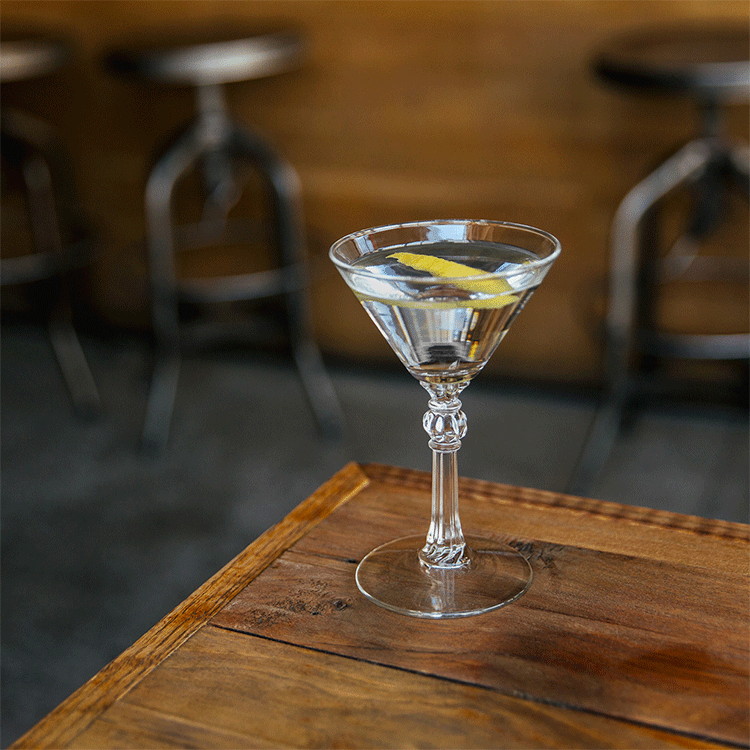Gin Cocktails
Martini
Martini Preparation
Combine all ingredients in a mixing glass and add ice. Stir 25-35 times. Strain into a coupe glass. Garnish with a lemon twist or olive.
Martini Story
Dry, dirty, or perfect, shaken or stirred, the Martini has evolved in preparation and style over the past century. Recipes including the base spirit combination of gin and vermouth started appearing in bar manuals in the late nineteenth century as the Martinez or some similar concoction. Some credit the bartender at the Knickerbocker Hotel for first serving the dry Martini to the likes of John D. Rockefeller in 1911, giving it a reputation as the drink of choice of financial power brokers. Others believe that the Italian Martini and Rossi vermouth products, imported in the US since the 1870s and growing over time to include Martini Rosso, Martini Extra Dry, and Martini Bianco, inspired the name and modern spin on the sophisticated cocktail. 50/50 An even split of gin and vermouth, this variation of the Martini grew in popularity as higher quality spirits like Plymouth and London dry gins evolved from and replaced the juniper-based genever historically used with bitters for cocktails like the 50/50’s predecessor, the Martinez. 2:1 The ratio of two parts Plymouth gin and one part French dry vermouth mixed with orange bitters first appeared as the Marguerite in Thomas Stuart’s 1896 guide, Stuart’s Fancy Drinks and How To Mix Them. As the Martini became more and more commonplace, bartenders played with the proportions, eventually finding that the 2:1 of gin to vermouth provided the happy medium most modern Martini drinkers sought when ordering the classic cocktail at the bar dry. The dry Martini, served with less vermouth and more gin, appears under the misnomer of the Martinez in 1904’s American Bar: Recettes des Boissons Anglaises et Américaines. Through the early 20th century, the dry Martini was essentially a 50/50 with dry vermouth, until Prohibition and World War II negatively impacted the US vermouth supply.

